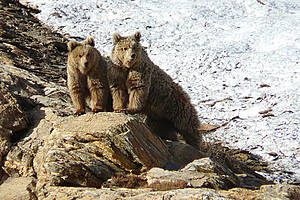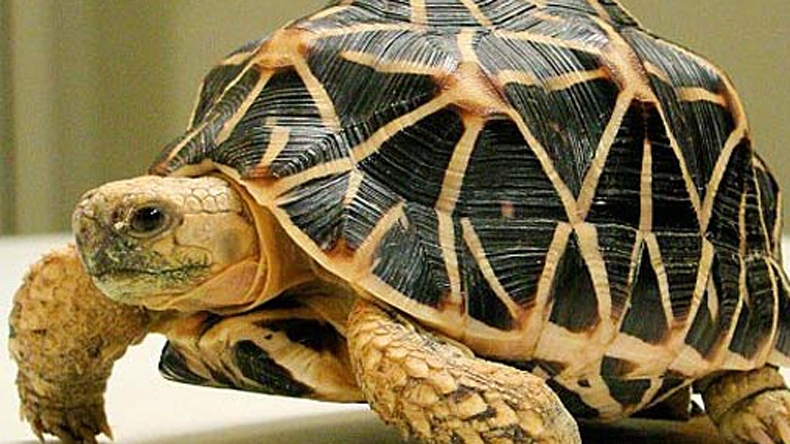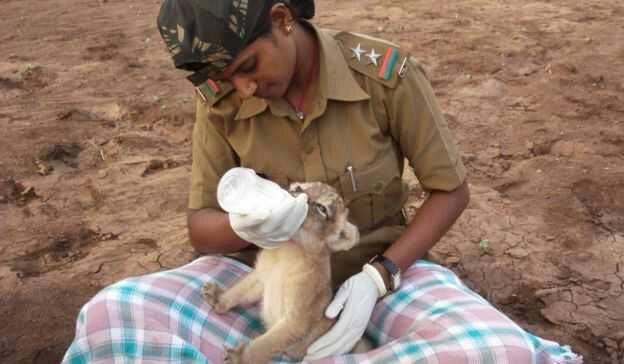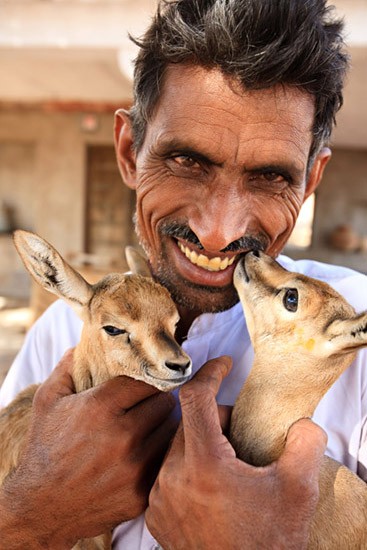
Aishwarya Maheshwari has a job to envy. As the Senior Project Officer with WWF-India’s Snow Leopard Project in Kargil region of Jammu and Kashmir, he not only gets to spend much of his time in one of the most beautiful places in the world, but can also catch a glimpse of wild species not often seen or heard. On one such lucky expedition he chanced upon a pair of brown bears, mother and son searching for food and roaming around in the wilderness of the Trans-Himalayan region.
Many in India believe that brown bears are only found in North America, India being home only to the black sloth bears. But in the Himalyas, in the region above 3000 metres from sea level, Indian brown bears exist that are a distant cousin of the American ones.
Aishwarya says, “The Himalayan brown bear (Ursus arctos isabellinus) found in the trans-Himalayas, a region above the height of the 3000 metres above mean sea level, is a cousin of the famous Grizzly or North American brown bear (Ursus arctos horribilis) that we see on TV. Both are separate sub-species of the brown bear (Ursus arctos).”
It surely is a revelation for many and before people start hoarding the Kashmir valley to catch a glimpse of this bear, Aishwarya is quick to add that the animal is shy and cannot be spotted that easily.
“The Himalayan brown bear is a shy mammal which avoids humans and usually retreats upon encountering them. I have been lucky enough to sight this beautiful creature three times since 2008, during my study on the snow leopard and its co-predators, stretching across the hills of Uttarakhand, Himachal Pradesh as well as Jammu and Kashmir.”
Telling about his experience Aishwarya says how his assistant and he, spotted a mother bear and her cub in Kargil district in May 2011. The duo was moving around the area and Aishwarya was able to observe them for more than 40 minutes. He also had a chance to photograph the pair.
“I had seen a mother and cub in the same area in November 2010 at a distance of 700m. There is a possibility that this could be the same family that I had observed before they went into hibernation, although I am not very sure.”
According to Aishwarya the brown bears of India do not rely on honey as a food option as the American brown bear. They are omnivorous creatures with a diet of herbs, tubers, termites and other insects, small mammals and occasionally domestic livestock he says.
He hopes that WWF-India can help reduce the conflicts between human and animals in the region and sensitize communities about the benefits of conservation.
Article source and image: WWFIndia
Related Stories:
British Vets Give Eyesight Back to Rescued Indian Bear






2 thoughts on “Brown Bear Mother and Cub Caught on Camera in Kargil”